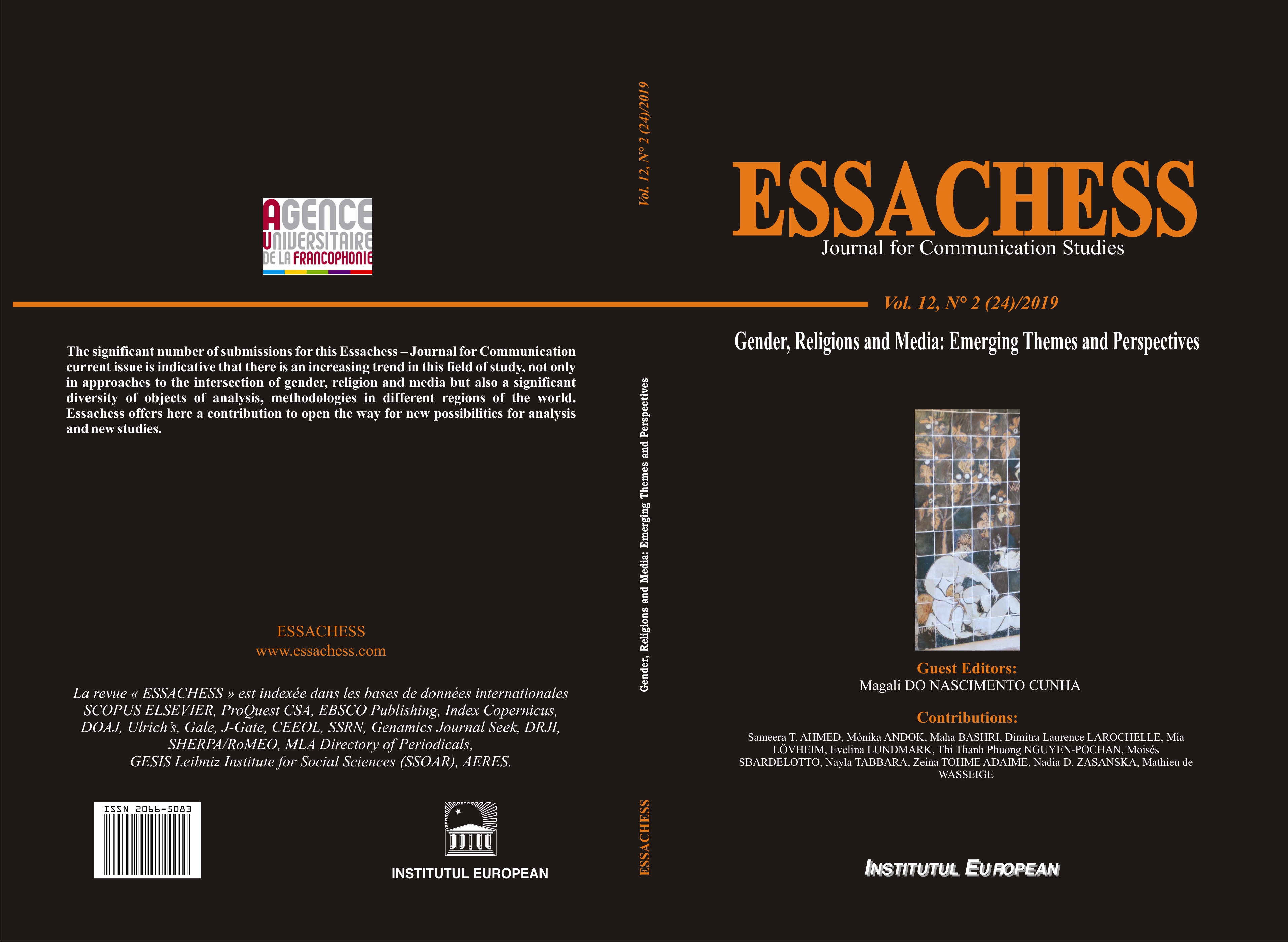Gender Differences in Digital Media Usage among Hungarian Religious Community Members
Gender Differences in Digital Media Usage among Hungarian Religious Community Members
Author(s): Mónika AndokSubject(s): Anthropology, Gender Studies, Media studies, Communication studies, Sociology, Theology and Religion, Theory of Communication, Sociology of Religion
Published by: ESSACHESS
Keywords: gender differences; religious social shaping of technology; social media; uses and gratifications;
Summary/Abstract: Based on empirical researches the article presents what gender differences can be unfolded in the digital media usage of Hungarian religious communities. In the theoretical background, the study overviews the literature of the research history of gender differences related to religions (King, 2004; Aune, 2015; Fedele, 2018). It also relies on the Religious Social Shaping of Technology (RRST) theory and the Uses and Gratifications theory, which serve the theoretical and methodological basis of this research (Brubacker & Haigh, 2017; Ratcliff, McCarthy & Ritter, 2017). Relying on these, the patterns of digital media usage of two Hungarian religious communities will be uncovered. The methodological process was the following: at first in-depth interviews were conducted with the communication leaders and bloggers of these communities, which were carried out concerning the RSST theory (Campbell, 2006, 2010, 2013, 2016; Cheong at al., 2012; Herteliu, 2018; Tudor & Herteliu; 2016, Falca, 2018). Following this, supported by the results of the interviews and the previous uses and gratifications researches, two questionnaires were composed (Laney, 2005). We got more than 600 respondents among the so-called “777” community (young Catholic bloggers community) and 64 respondents among the Hungarian Krishna-Conscious Believers community.
Journal: ESSACHESS - Journal for Communication Studies
- Issue Year: 12/2019
- Issue No: 24 (2)
- Page Range: 39-60
- Page Count: 21
- Language: English

